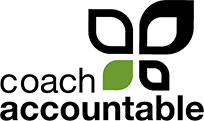Different Offers, Different Clients, Different Currencies
For the longest time in CoachAccountable, choosing the currency in which you did business with your clients (for invoices, Offerings, and Engagements) was a one-and-done, set it and forget it kind of thing.
This simple model of one-currency-per-account has worked just fine for over 99% of our customers: most everyone using CoachAccountable to bill for their services only needed to do so in exactly one currency across the board.
But as we get to serving more and more folks, particularly larger organizations with an international base of customers, they “hey I need to bill some folks in X and others in Y” sentiment has become more prevalent.
The time has come for CoachAccountable to support billing in multiple currencies, and so this is now a thing. Let’s check it out!
Setting up to Transact in Multiple Currencies
It all starts with choosing the currencies you plan to invoice in. This, as always, is found in the Client Invoicing Config. You’ve got the usual drop down menu to pick which currency you’re invoicing in, and there’s now a little extra link, “Actually, we bill in several currencies…”

I like to keep the UI conversational.
Click that, and you’re able to choose whichever are relevant to your business:

Need to invoice in something that’s not here? Let us know.
Using the Right Currency
Because invoicing in multiple currencies is such a niche feature, I thought it essential to not clutter up the UI in any place for the majority for whom a single currency suffices.
Accordingly, the ability to choose multiple currencies is tucked away behind that link. But more importantly, when you choose more than one, only then will you find the option to specify currency (from among those chosen) in certain other places: for given clients, Offerings, and Engagements.
You can set the preferred invoicing currency for a given client by finding them in the My Clients listing and clicking on their gear icon. In the “Manage Client” pop up that appears, you’ll find the setting under Settings >> Preferences:

Presumably this won’t change much once first set… but it’s easy to update if it does!
Once set for a client, all invoices you manually create for that client will be in their preferred currency.
When setting the price for your Offerings, IF you have your account configured for multiple currencies you’ll see a little link by which to set the currency for that price. Click it, and the menu to choose will appear.

You might make two sets of Offerings, one for each currency you’ll be selling in.
Setting the currency for the invoices of an Engagement and Engagement Template works the same way: if you’re configured to transact in more than one currency, you’ll find the place to choose which one.
Note that the currency set for an Offering or Engagement takes precedence over the currency set for a client: if a client is set for GB pounds, for example, but is enrolled into an Engagement which entails invoicing in euros, those engagement invoices will be issued in euros.
Also note the presence of “$USD” in above example: the system won’t ALWAYS clutter up the display with those 3-letter currency codes, but if a currency you’ve chosen could be one of several that use the same symbol (in this case, “$” which could refer to US or Canadian dollars), CA will automatically adjust the display in order to disambiguate.
Different Offerings for Different Markets
If you have customers in different countries who are to be charged in different currencies, you might make multiple sets of Offerings (and/or Engagements), each one priced appropriately for their respective market and currency. You can do this quickly by setting up an Offering (or Engagement) in one currency, and making a clone that varies only in pricing.
From there it’s up to you to make available the correct set of Offerings to the right people. You might, for example, create two Offering Bundles, one that you present to Canadian customers and another for those in the US.
Currencies and Your Payment Processor for Online Payments
If you’re set up to accept payments from your customers online (via your chosen payment processor, Square or Stripe), the currencies that you’re able to accept those payments in is a matter between you, your payment processor, and your bank. So be certain that the currencies you pick are actually ones you can accept payments in!
If you’re not processing payments online, then you’re free to choose whichever currencies you like (as you’ll be manually recording payments that have been received by some other channel).
Reporting in Multiple Currencies
It’s nice to see the sum total of invoicing action in your account, and CoachAccountable offers plenty of places to do that. Having multiple currencies amid your business transactions makes totaling up the numbers a little hairier, but not insurmountably so. CA handles this by listing items all together, but showing currency-specific totals broken out at the bottom:

This should do fine for your bookkeeper. :)
And there you have it! If you do business in only one currency, things will work as they always have with no real changes to the system. But if you need to transact in multiple, the setup is easy and CA will handle the differences seamlessly.
More recently: Improve the Sales Funnel Journey With Offering-Specific Page Arrangements
Previously: Coaching Gone Viral

Hi John,
Thank you for Constantly And Neverendingly Improving CA!
You ROCK!
I will think about it how If I will use it
Glenn
April 2, 2020 @ 1:54 pm
Hi John,
This is such great news!!
Thank you for continually evolving CoachAccountable.
April 20, 2020 @ 9:56 am